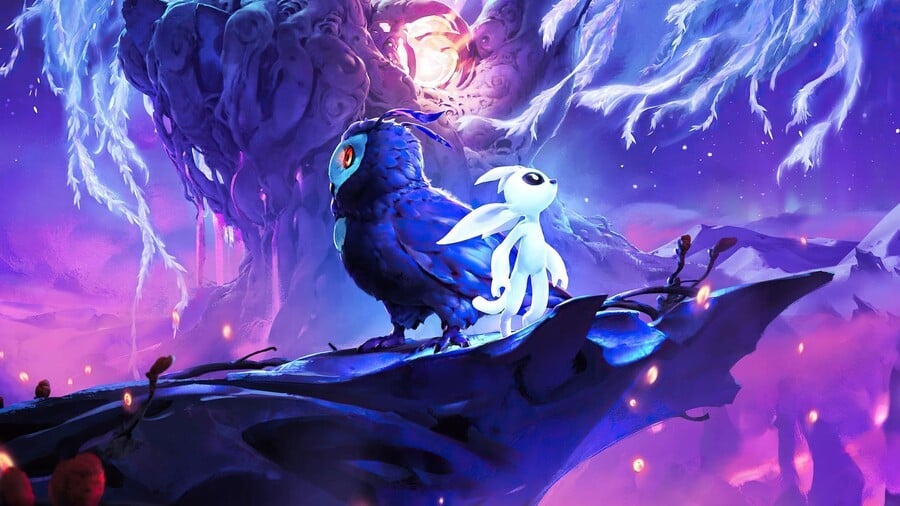
The previously unannounced appearance of the remarkable Ori and the Will of the Wisps on Switch eShop last month was a huge and very pleasant surprise. Of course, the really big surprise came last year when Microsoft permitted developer Moon Studios to bring its predecessor Ori and the Blind Forest to Switch after securing the game as an Xbox console exclusive during development, so perhaps it was only logical to assume the sequel would show up sooner or later.
Technologically speaking, however, this second enchanting Metroidvania-style gem is another beast entirely. Will of the Wisps was pushing Microsoft's more powerful hardware when it launched back in March, and most technically-minded onlookers considered the chances of Will of the Wisps coming to Nintendo's handheld hybrid very remote indeed. And yet it did, with its 60fps gameplay intact, too.
Indie developer Moon Studios is a 'virtual' studio with employees all around the world contributing to the Ori games and an upcoming action-RPG project. We recently had the chance to ask Co-Founder of Moon Studios and Lead Engineer Gennadiy Korol (Israel), Lead Artist Daniel van Leeuwen (Netherlands), and Art Director Jeremy Gritton (Florida, USA) about the Ori series and its unexpected journey to Nintendo's console.
Nintendo Life: We’ve read that the idea to bring Ori and the Blind Forest to Switch came from Moon Studios itself rather than Microsoft. What was the motivation behind that? Was it something about Nintendo, the Switch hardware or simply sharing Ori with as wide an audience as possible?
Daniel van Leeuwen, Lead Artist: A lot of people at Moon are big Nintendo fans and a game like Ori is just a perfect fit for the platform. Many of us were excited to play the game on our Switch so that definitely was a big motivational drive.
Gennadiy Korol, Co-Founder of Moon Studios and Lead Engineer: Being able to play a painting come to life platformer at 60fps in your lap? That’s a dream come true! We were not sure if something crazy like this would’ve ever happened but early on we have proven that we could do this port and Microsoft were really awesome to allow their IP on another platform in this way.
Ori has been inspired by a lot of the old Nintendo classics that all of us were growing up with, so this is almost like closing a circle. We also love a good technical challenge and proving people that said that this could never run at 60fps on that platform wrong!
The original game released on Xbox One five years ago – did the concept and gameplay evolve much over time, or was it all in the design doc? Were there any specific games that influenced the team’s direction?
Daniel: We had a pretty strong base with Blind Forest when it came to platforming but we were always aware that the combat was not up to that level. The main focus of the Wisps was to incorporate a much more advanced combat system, which also resulted in a lot of new enemies and big boss fights. We don’t really work from a pre-set design doc. Moon Studios is much more iterative and we’ll experiment a lot in the game itself to get a sense for what works and what doesn’t.
From a visual standpoint, Ori often looks like a lovely piece of concept art come to life. Was that art style there from the beginning?
Jeremy Gritton, Art Director: We had a great foundation in place with the work done by Ori and the Blind Forest's Art team. Because we were a new Art team coming in, we studied Blind Forest's art style in depth. We wanted to immerse ourselves and understand all of the artistic choices that were made, while also finding what we could do differently to push the visuals in new ways. Our goal was to create something that not only would stay true to its predecessor, but provide enough visual distinction to have its own identity.
Daniel: Even though the art direction was there from the beginning with Blind Forest, a lot of the art really came together fairly late in the project. Much of the base art dressing was in place earlier during the production but it’s really in those iterative passes when all the little details get added that everything starts to click.
with Will of the Wisps we didn’t just want to repeat the same thing, we wanted to really push the envelope and take it to the next logical step
Gennadiy: The art direction of this game basically evolved from late 2010 when we started working on Ori and the Blind Forest through numerous tests and iterations on our core tech and the artistic technique and we loved where Blind Forest ended up. But with Will of the Wisps we didn’t just want to repeat the same thing, we wanted to really push the envelope and take it to the next logical step. Through huge improvements to the dynamic painterly lighting engine, the amount of parallaxing art, reactive physical animations of the environment and massive 3D creatures we wanted to elevate the fidelity and the feel of the game while still keeping it familiar and true to the original game.
Was the decision to partner with Microsoft an easy one for the team? How did the benefits of Microsoft’s backing manifest during production and in the game itself?
Gennadiy: Microsoft were the first to see the potential in us and they believed and supported us all the way through, allowing us to make the game we wanted to make. Without Microsoft there would be no Ori and we are going to be forever grateful for having gotten that chance to be able to create something we were truly passionate about and to make Moon into what it is today.
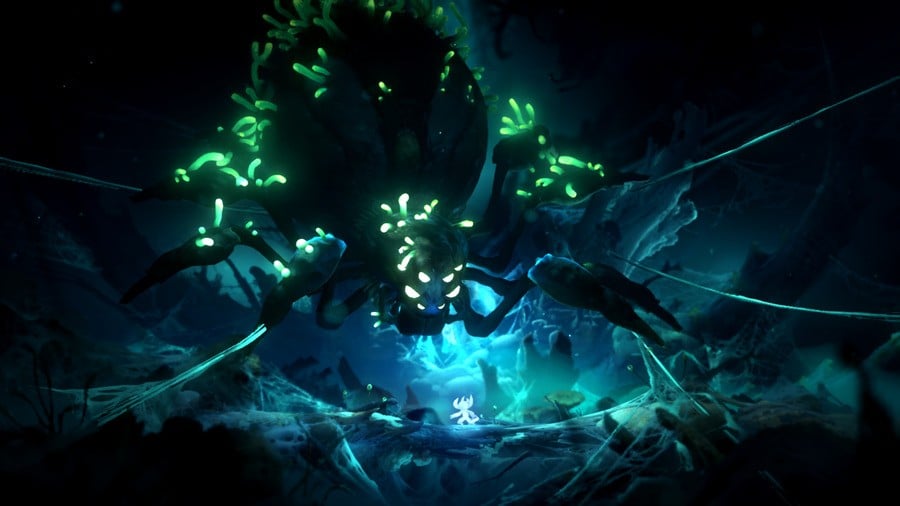
With the polish of the final game (and the fact it’s published under the Microsoft banner), many players might assume Moon Studios is some huge outfit with hundreds of people on staff rather than a small ‘virtual’ indie developer. How many people worked on the first game, and how big is the studio now?
Jeremy: When I joined Moon for Ori and the Will of the Wisps, the team was much smaller: maybe 10-15 people. From there, we scaled up over the course of the project. A large portion of the development was done with around 30-40 people, and by the very end we had over 60 people. If people play our games and think our studio is bigger than we are, that's a big compliment to our work. We’re always aiming for high quality regardless of our size.
Daniel: Ori and the Blind Forest topped around 20-25 people during development, for Will of the Wisps we scaled significantly and topped around 60.
The announcement of the first game coming to Switch was a huge surprise. Considering it began development long before Switch hardware existed, what were the biggest challenges you faced when transposing The Blind Forest onto a handheld platform?
the way the game was rendered was completely rewritten to allow for a better control of where detail is preserved
Daniel: Reaching 60fps on the Switch platform is a big challenge. In order to achieve this the way the game was rendered was completely rewritten to allow for a better control of where detail is preserved. Another big challenge was to make the seamless world stream in correctly and in time, especially because Ori has such fast paced platforming when you’ve gathered all the abilities.
The Will of the Wisps turned things up a notch on Xbox hardware. Tell us a little about the tech advances made in the sequel. Was a potential Switch version in the back of your minds during development?
Jeremy: Some of the biggest technical advances for Will of the Wisps were the inclusion of 3D characters, dynamic lighting, and physics. The implementation of 3D characters gave us a ton of freedom for combat, which is a core evolution from Blind Forest. That becomes even more amplified in our boss fights, which showcase combat at its most robust level. Our dynamic lighting system is a big addition to the game because it allows us to push visuals in ways that couldn't be done before. It helps sell the illusion of dimensionality and seats the character and effects that much more into the environment. The physics system was another big gain, as the environment responds to the character even more than before - the world feels more tactile, responsive, and alive.
Gennadiy: Jeremy has mentioned the main things but honestly there’s so many small polish bits and improvements that all help to make the game feel higher fidelity, that much more immersive, fluid and seamless. And sometimes the best tech is the one you don’t see or notice, it means it’s actually working well!
And personally I love the dynamic light rays that we were able to make work at 60fps on the Switch, I have never seen this in other games at this framerate and I love how it makes you feel while you’re exploring the world and overlooking the vast and beautiful vistas of Nibel.
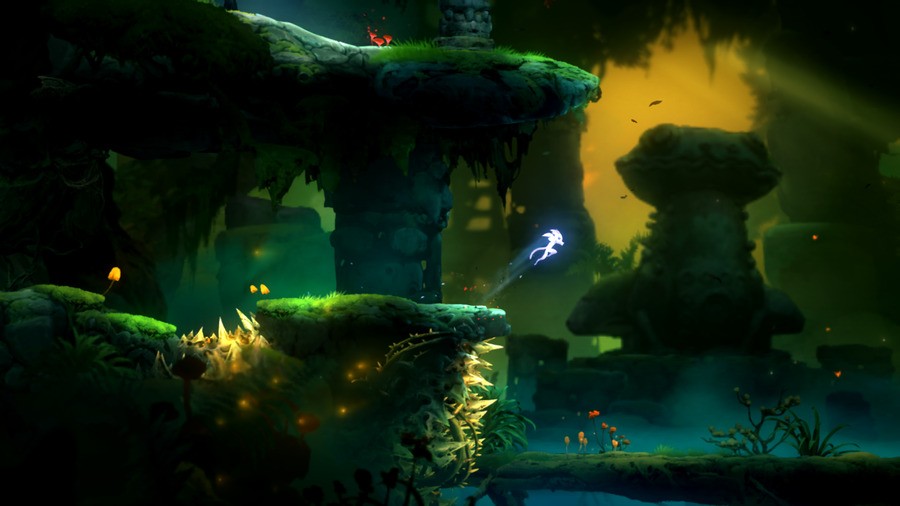
The game looks gorgeous running in 4K on an Xbox, but the Switch version manages to capture that beauty without feeling compromised. Frankly, we weren’t expecting a port of the sequel – certainly not one that targets 60fps. Witchcraft aside, just how did you go about scaling Will of the Wisps to Switch’s modest specs? Were any art assets reworked or altered for the Switch release?
Jeremy: Our Tech team really pulled the game apart to find every possible avenue to increase performance. I'm not qualified to go into all the details of what they accomplished, but their work allowed our Art team to keep the visual changes to a minimum, which was great. It's pretty amazing that we were able to retain all that we did visually while hitting 60fps. Digital Foundry did a really informative video on the work that went into the port.
Daniel: The art team did go in for a while and made sure that the scenes were stripped of any unnecessary elements that weren’t visible or barely contributed to the overall impression. We were also supported by automated tools that would analyze the scenes and put a ‘visual impact’ value on each of the elements that we could use to determine if something could be stripped or not.
When we first ran the game after the heavy optimizations passes for the Xbox versions post launch, the game ran at 24fps. It was clear that this would be along road ahead
Gennadiy: When targeting 60fps on such a weak platform while wanting to preserve the perception of the same image quality as the original console release you really have to take “no stone left unturned” approach on optimization.
When we first ran the game after the heavy optimizations passes for the Xbox versions post launch, the game ran at 24fps. It was clear that this would be along road ahead and a lot of us questioned if this wasn’t just a foolish dream.
We were able to break down every single performance area and our team were firing on all cylinders to optimize absolutely every single aspect of our rendering, simulation, gameplay, graphics, streaming and memory management. If any one of these elements wouldn’t hit the target, then 60fps would be off the table.
We also had to re-imagine how the rendering pipeline worked and had to readjust numerous scenes for the new rendering method specifically designed for the Switch.
We didn’t want to make this port by just taking stuff out and stripping the game down until it hits the target framerate. Sometimes you need to think outside of the box and find a way to break the game apart and then put it back together in a new, more efficient way specifically for the Switch platform.
With your experience as a ‘virtual studio’, Moon was presumably one step ahead of other companies when it came to facing 2020. How has the global situation affected the team and its projects?
Jeremy: Covid changed a lot of things recently, affecting so many people around the world. For me, it led to new routines, canceled plans, all that kind of stuff. A lot of things in my daily life were up-ended. But because of the way our studio is set up, working at Moon was the one thing that continued without even skipping a beat. That day-to-day stability has been really nice considering all the general uncertainty this year.
One impact Covid did have on our studio was preventing all of us from getting together to celebrate Ori's launch. That was unfortunate because we were all really looking forward to it, but in the bigger scheme of things we're still very lucky. Many people's livelihoods are adversely affected by Covid, and at Moon we've been extremely fortunate in that sense.
Daniel: Ori shipped on March 11th [on Xbox], that was right before it really exploded so many plans from people to enjoy some time off after the release were cancelled.
At Moon we also like to come together once a year and see everyone face to face so that will have to wait for a while. In terms of team and projects it didn’t affect us at all and I think many companies that were forced to work from home will realize the benefits it can give.
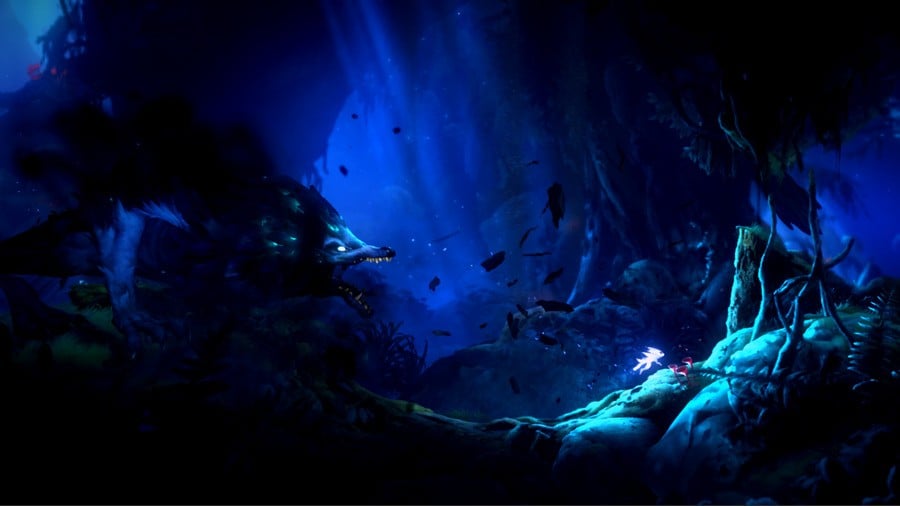
If you could go back a decade, is there anything you’d change or do differently with regards to development of the Ori games?
In game development you’re not always given a manual for how to put everything together, but that’s part of what makes it exciting.
Jeremy: On Will of the Wisps, I don't know that we could have done too much differently. We were always adjusting as we went - identifying what wasn't working and course-correcting on the fly. Hypothetically, if we’d had all the knowledge we gained during development right from the beginning, we could have done some things differently. We would have known exactly what we were building and how to build it. But since we were trying so many new things, there was a lot of experimentation happening, and a lot of lessons to learn along the way. In game development you’re not always given a manual for how to put everything together, but that’s part of what makes it exciting.
Daniel: I think for Will of the Wisps we would have teased the game a little later, that was pretty early in development.
Moon Studios’ next project is reportedly an ARPG. What can you tell us about it? Will it be set in the Ori universe, or are you looking for a break after 10 years?
Jeremy: It's going to be something all-new, and I think it's going to be a really cool new world to explore. We can't give any more details at this time, but we're all excited about what's to come!
Daniel: Many people on the team are excited about exploring a new genre and it’s getting everyone's creative energy going through the roof! Game development is hard, we also do a lot of internal testing ourselves and having made and tested the game for the last 5 years it’s always enjoyable to be able to work on something new again!
With two much-loved titles under your belt on Switch, we imagine we’ll be seeing more Moon Studios games on Nintendo systems. Would that be a safe assumption?
Jeremy: We don't have anything to share right now about future Moon Studios games on Nintendo systems. But, we're really happy to have brought both Blind Forest and Will of the Wisps to the Switch. It helps introduce a new audience to Ori, and sharing our work with as many people as possible is awesome!
Daniel: Moon Studios is full of big Nintendo fans so any time we’ll get the opportunity to publish our games on their platforms we will be excited about that.
Gennadiy: All we can say at this time is that we absolutely LOVE the Switch and we want our games to be experienced by as many people as possible!
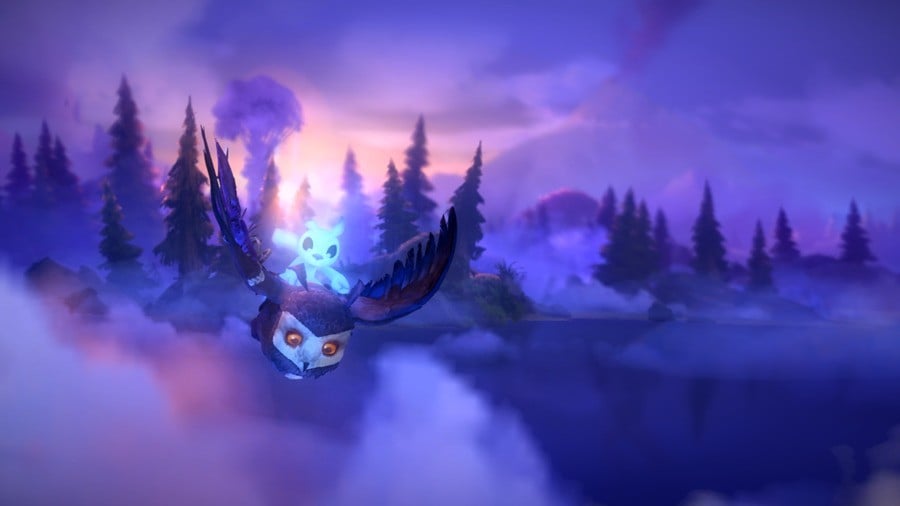
Our thanks to Gennadiy, Daniel and Jeremy, and Kris from Heaven Media. Physical releases of both Ori and the Blind Forest and Ori and the Will of the Wisps are coming to Switch in December courtesy of iam8bit (including a gorgeous Collector's Edition) and are available for pre-order now.





Comments 29
I played the original on Game Pass. I loved it, but I never got around to finishing it. Don’t know why, exactly. I loved it while I played it. I will definitely buy both on the Switch.
Edit: It’ll be interesting to see how the rumble is on the Switch version. It helped to immerse myself while playing the game on the Xbox One. Very strong!
Great Article! Ori and the Will of the Wisps was a dream port for me, and I'm so happy and grateful it actually happened. And it's still 60fps? I don't know much about Switch ports, but this seems like one of the most impressive ones yet. Ori and the Will of the Wisps is right at home on the Nintendo Switch!!
Ori in smash? I probably wouldn't bet on it, but not saying it isn't within the realm of possibility.
Currently available to pre-order for £40 for the physical .... or £15 on XBox 🤷🏼♂️ #ButSwitchTaxIsntReal
Can’t wait to see what they come up with next. Loved the first Ori and playing through the second now which is even better!
@kemosabii It's in Rivals of Aether which is... Pretty close I suppose.
Microsoft is wise. They don’t need a handheld system, just leverage the Switch HW & user base.
This game is so so good! I really hope it sells millions on Switch, it'd be totally deserved. Best game of the year for me so far (I haven't played TLOU2 yet, though).
We need to support this kind of games and this kind of developers, that work so hard on Switch.
@kemosabii high likelihood of a mii costume I'd imagine.
I applaud them for all their efforts on a very good port. Love the series all the more for it.
The fact that Moon had the 60fps vision in mind and didn't give up on it, speaks VOLUMES. They put in the work to make it happen, and it paid off.
Oh hell yeah, love reading more about this game and its making! This game is just so amazing and i seriously wish it and its developers so so so much success!
@kemosabii Moon recently commented they'd love to see it happen but encouraged fans to get Phil Spencer's attention on the matter, so there's probably not anything planned as of yet and it probably wouldn't be Ori as a character if something happens
With that said I had a dream last night where Ori had already been revealed as Challenger Pack 8, so it's pretty coincidental seeing that statement today
When I saw the Digital Foundry on Will of the Wisps and saw that frame drop on the Xbox One version I was like "Yep, no way this is running on Switch much less being considered." Consider me shocked to be seeing this shadow dropped on the Switch and have it working.
That's awesome, it's great seeing new talent and IPs thriving in an industry so focused on remakes and giant monolith developers. Also, that collectors edition is the sexiest one I have ever seen. Only one I've actually ever considered buying.
Switch game of the year without doubt.
Absolutely did not expect this game to ever come to Switch, much less at the same level of quality as it's predecessor. I do hope they go for a third entry to make it a trilogy after this ARPG, but I'll buy anything Moon Studios makes now. Fun fact: they got the main guy from AM2R to join them, too!
This was my personal GOTY, I loved every moment and even a couple of months after finishing it, this game is still on my mind.
We tend to consider "magic" when ports like Witcher 3 or Doom Eternal come to Switch, but this one? I tell you, this is not far behind!
Amazing videogame and amazing port. This has been my Switch's GotY. If you like 2D adventure games, you must play this and the first one.
It's a fantastic port for sure, but I had 5 game crashes over the course of my first playthrough. So i wouldn't call it perfect. I was playing of the cartridge and it always seemed to happen when trying to load a large amount of data at once (3 out of 5 times were when I tried to fast travel). Thankfully this one is good at auto-saving your progress so I never lost a ton of progress because of it, so it wasn't too bad though. I didn't have such problems playing Blind Forest off a cartridge.
Steve and the Steve of Steves, long live M. A. R. I. L. L. A.
Really like the look of these games and I keep going to pick iy up but the £25 price point puts me off.
I'm grabbing a Series S (as soon as they are available) and both of the Ori games are available on Gamepass so it's hard to justify the price on switch to double dip.
@ChaosBadger777 the games are worth the entry fee but honestly, you are right to be slightly apprehensive.
I've completed the first game and I've purchased the second already, not played it yet but I'll get around to it soon.
Now the issue i had with the first game is how short it is, the game was great but i beat it in a little over 20 hours, and i did EVERYTHING possible, i purchased the game for £20 so as far as I'm concerned, it only JUST made back it's value in game time.
While it was enjoyable, you can spend less money and get a much longer enjoyable experience, like Hollow Knight, is £15 and is an 80 hour game at least (other games like Dead Cells, Hades, Into The Breach, all come to mind, cost less and have more content).
I've heard the second game is much like the first game in length, maybe slightly longer but at most you maybe able to get 30 hours out of it.
I mean thats good enough to warrant the cost of admission but really only just about, in terms of the quality of content, it's good. But in terms of quantity, you're not getting enough.
Having played it and beaten it on Switch before and after the patch, it's totally worth it. You can nitpick the price per hour ratio if you want, but I felt my money was worth it. You can definitely beat it in 20 hours or less if you don't look for everything. I would think 100% would take between 30-40 hours for anyone who isn't an absolute pro or doesn't have advance knowledge of the routes. I could just play it on my Game Pass, but I hardly get a chance to sit down in front of my TV these days (and I hate playing platformers on my PC). Having it on Switch and taking it mobile is the reason why I got to enjoy this game (and so many others).
@rallydefault it's already mobile via Game Pass ultimate (as long as you have a decent Android device) so why not play it there if your already paying the sub instead of paying twice?
@Razer, cheers will hold off for it on gamepass. Your comment made me smile as I also try to get an hour of gameplay per £1 spent
I had no idea this was an intense game to run. Makes me glad I got to experience a quality version.
I sold my xbox because ori came to switch. I mean if ya dont like halo or gears of war or forza whats to point on owning one
I finished this game yesterday, it's truly a great port and the game looked great on my 1440p monitor as well as handheld. It's a bit tricky in places but if I can do it, chances are you can too.
Shame it can't do 8K on Switch like it does on Series X.
Tap here to load 29 comments
Leave A Comment
Hold on there, you need to login to post a comment...